Get The Visibility Your Company Needs
Reduce compliance risks and mobility costs while managing individual and project-related travel with ImmiSMART: the solution that unifies your travel and mobility programs.
SAUDI ARABIA: Changes to Saudization Calculations for Sponsoring Companies
April 21, 2015
The Saudi Ministry of Labor recently introduced two amendments to their method for calculating “Saudization” rates. These changes aim to provide increased flexibility to employers for sponsoring foreign nationals whilst also protecting the Saudi Arabian workforce.
What is Saudization?
The concept of Saudization refers to the nationalisation of the private sector workforce with a view to reducing dependence on foreign labour. The Nitaqat system was announced in June 2011 amid concerns of increasing youth unemployment and low Saudi recruitment levels in the private sector. Nitiqat imposed a quota system for the hiring of Saudi nationals, classifying companies into four categories according to their Saudization levels – Premium, Green, Yellow and Red.
|
Business Size |
Red |
Yellow |
Green |
Premium |
|
Small (10-49) |
0-4% |
5-9% |
10-39% |
≥ 40% |
|
Medium (50-499) |
0-5% |
6-11% |
12-39% |
≥ 40% |
|
Large (500-2999) |
0-6% |
7-11% |
12-39% |
≥ 40% |
|
Very large (3000+) |
0-6% |
7-11% |
12-39% |
≥ 40% |
Effectively, the more Saudi Arabian nationals a company employs, the higher their “Saudization” levels and the higher their Nitiqat classification. There are various benefits and sanctions attached to the different classifications of the Nitaqat system and therefore which category a company has been assigned to will determine the criteria, restrictions and privileges applied to sponsoring foreign workers. For example, Premium and Green banded companies can benefit from expedited visa processing whereas restrictions enforced on Yellow and Red banded companies will reduce their ability to recruit foreign workers and renew existing work permissions
The Changes
Until now, new Saudi employees were required to be employed by the company for a minimum of 13 weeks before they could be included as a “full” employee, in the calculation of the company’s Saudization level. The Saudization percentage was calculated by counting a new Saudi employee as a one-third employee in the first month, two-thirds in the second month and a full employee in the third month.
Changes to the existing policy are that:
– The 13-week requirement has been lifted and Saudi nationals shall now be counted towards a company”s Saudization level as soon as they are officially employed
Correspondingly, Saudi workers will be excluded from the Saudization calculation, the moment they are no longer employed by company to address the fluctuation in employee numbers that will result from the above, Nitiqat calculations shall now be based on the weekly average Saudization levels gauged over a 26-week period.
Conclusion
These changes are intended to promote retention of Saudi Arabian employees in companies and to prevent manipulation of Saudization levels into a higher Niaqat classification through the abrupt “hiring and firing” of Saudi nationals. It is hoped these changes will encourage fairer employment practices and improve the efficacy of the Nitaqat programme.
The changes are also intended to protect companies whose Saudi employees resign, as the levels are judged on a 26- week average, rather than a shorter time period of 3 months, providing a more accurate picture of the circumstances and affording employers a longer opportunity to replace any Saudi workers that have left.
If you have any queries or questions regarding Saudi immigration, please feel free to contact us.



